Managing blood sugar is a critical task, especially for those dealing with diabetes. With a myriad of food options available, it can be overwhelming to choose the right ones. Have you ever considered the role color plays in food? Well, here’s a list of 10 black foods that are not only appealing to the eyes but beneficial for blood sugar control as well.
Why Choose Black Foods?
Black is not just a stylish color for your wardrobe; it could be a game-changer for your health, especially when it comes to managing diabetes. So, why are black foods getting all the hype lately?
For starters, the pigments that give these foods their dark hue are often packed with powerful antioxidants, such as anthocyanins and flavonoids. Antioxidants play a crucial role in neutralizing harmful free radicals in the body, thereby reducing oxidative stress—a significant factor in the development and progression of chronic diseases, including diabetes.
Additionally, black foods often contain unique bioactive compounds that specifically target pathways involved in blood sugar regulation. Many black foods are also high in dietary fiber, particularly soluble fiber, which can help slow down the absorption of sugar into the bloodstream, mitigating spikes in blood sugar levels.
So, choosing black foods isn’t just a culinary trend; it’s a science-backed approach to better health. And if you’re keen to manage your blood sugar effectively, incorporating these dark-hued wonders into your diet could make a significant difference.
Methodology
Before we delve into our list of must-try black foods, it’s crucial to understand how we curated this list. Each food item was evaluated based on multiple criteria:
- Scientific Evidence: We focused on foods that have been studied for their impact on blood sugar levels and diabetes management. The findings from reputable scientific journals served as our guide.
- Nutrient Density: Foods high in essential nutrients like vitamins, minerals, and antioxidants received higher scores.
- Versatility: How easy is it to incorporate these foods into different meals? A food’s adaptability to various recipes was another key consideration.
- Availability: We prioritized foods that are relatively easy to find in grocery stores, markets, or online.
- Affordability: While some foods are undeniably effective but pricey, we aimed to include options that offer good value for their nutritional benefits.
10 Black Foods that Lower Blood Sugar
10. Squid Ink
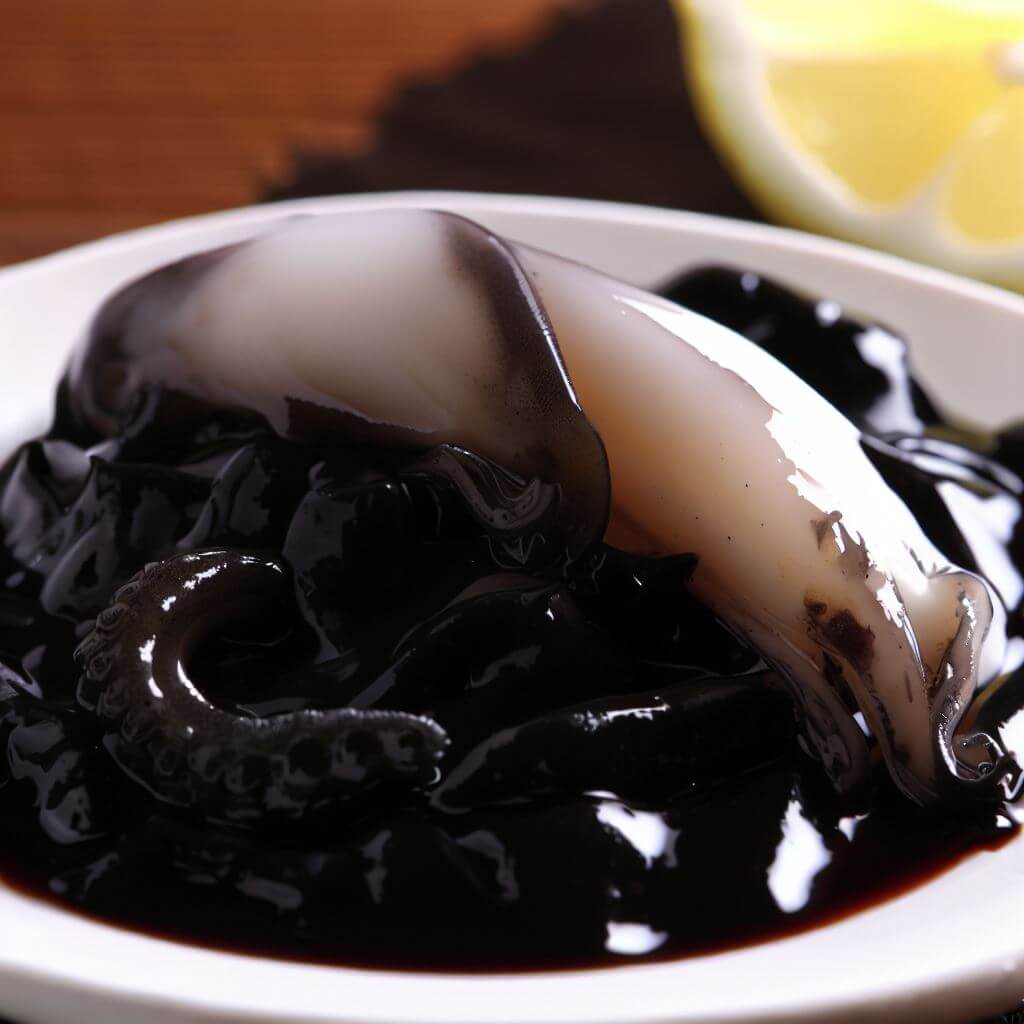
Squid ink may not be the first item you think of when it comes to health foods, but this intriguing culinary ingredient is more than just an exotic flavor enhancer. Found in Mediterranean and Japanese cuisines, among others, squid ink has been gaining attention for its beneficial health properties, particularly when it comes to diabetes management.
Nutritional Profile
Squid ink is rich in antioxidants, including an amino acid called tyrosine, which is not only vital for protein synthesis but also boosts the production of neurotransmitters. Additionally, it contains glucose-lowering compounds such as Taurine, which has been linked to improved insulin sensitivity.
How to Incorporate Squid Ink in Your Diet
Squid ink is typically used in pasta dishes, risottos, and soups, but its versatility doesn’t stop there. You can add it to bread dough for black-colored bread or even mix it into salad dressings for an unusual twist. It’s also popular in ink-fish stews, where its unique flavor shines through.
Potential Downsides
While the health benefits are promising, squid ink does come with some caveats. It has a very potent taste that might not be palatable for everyone. Also, sourcing quality squid ink could be both challenging and expensive. It’s not commonly found in all grocery stores, so you may need to visit specialty shops or order online.
9. Balsamic Vinegar
Balsamic vinegar is not just a condiment for your salads; it’s a health-boosting elixir that has been aged for several years, concentrating its nutrients and bioactive compounds. Originating from Italy, traditional balsamic vinegar is made from the reduction of grape juice and aged in wooden barrels.
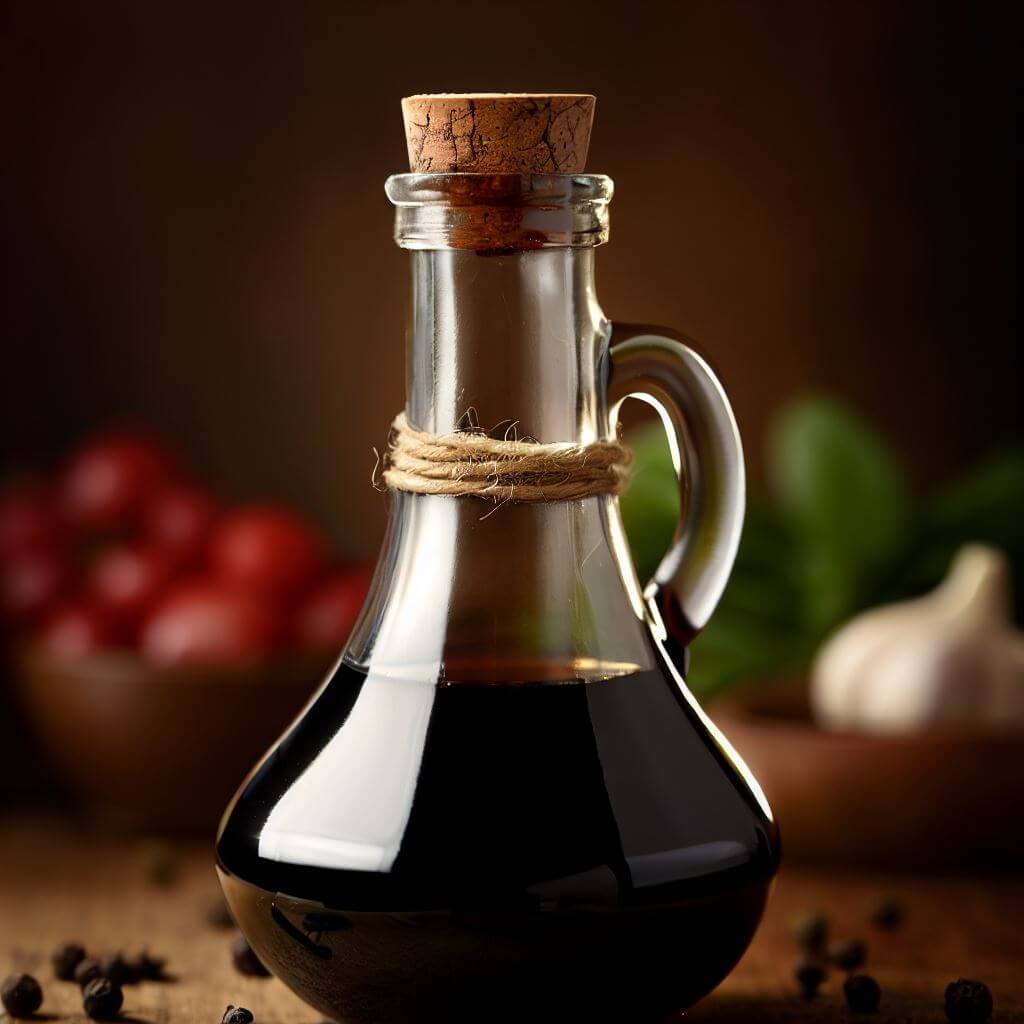
Nutritional Profile
This vinegar is abundant in bioactive compounds like flavonoids and polyphenols, which have demonstrated benefits in reducing inflammation and improving blood sugar management. Additionally, balsamic vinegar has a low glycemic index, meaning it causes a slower rise in blood sugar levels compared to other types of vinegar.
How to Incorporate Balsamic Vinegar in Your Diet
Balsamic vinegar can be used in a variety of ways beyond salad dressings. Try drizzling it over roasted vegetables or use it as a marinade for meat and fish. You can even mix it into beverages, like smoothies, or use it as a glaze for fruits like strawberries to enhance their flavor while benefiting from its health-boosting properties.
Potential Downsides
Despite its numerous health benefits, balsamic vinegar has a high acidity level, which may not be suitable for everyone, particularly those with sensitive stomachs. It’s also worth noting that authentic, aged balsamic vinegar can be quite expensive. There are cheaper alternatives available, but they may not offer the same level of health benefits as their traditional counterparts.
8. Mussels
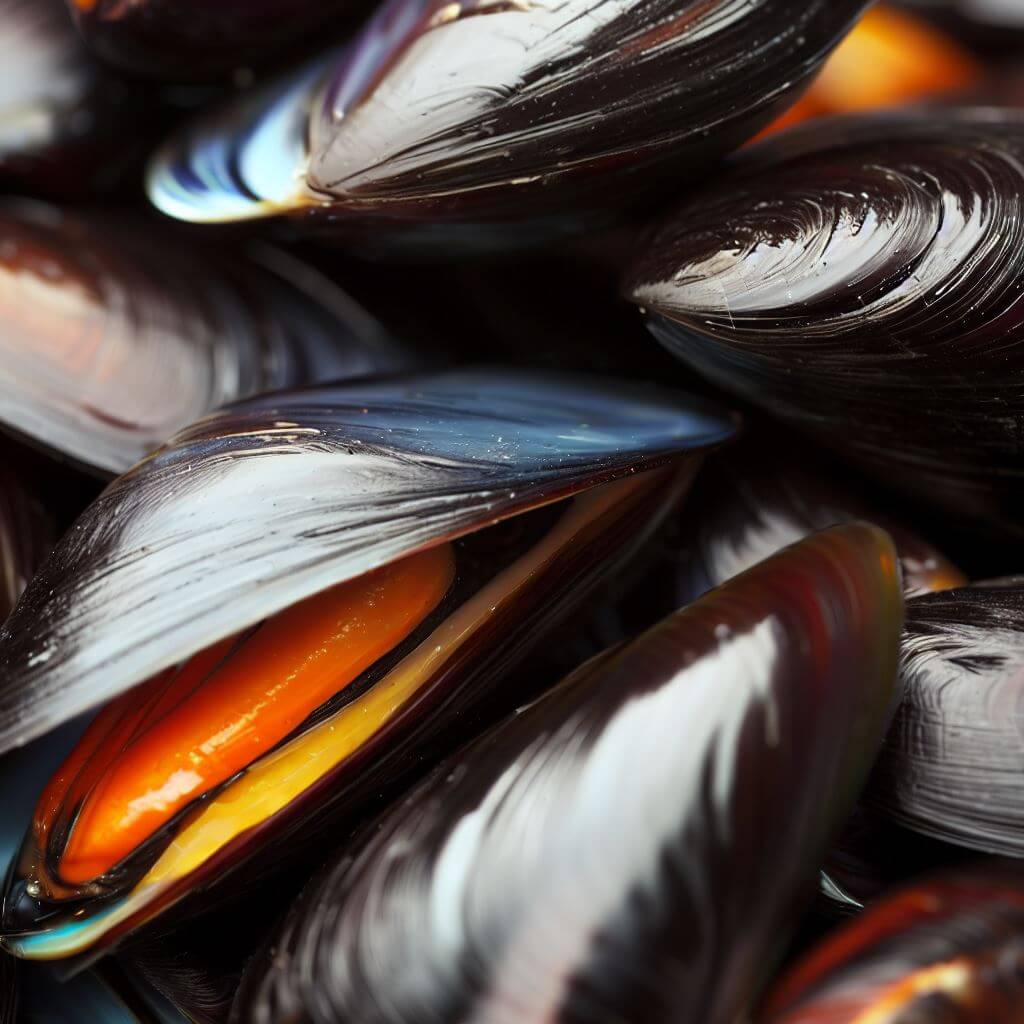
Mussels are often viewed as a gourmet food item, frequently enjoyed in fine dining establishments. However, the appeal of these dark-hued shellfish goes far beyond their luxurious reputation. They are a nutrient powerhouse and particularly advantageous for those who are striving to manage their blood sugar levels.
Nutritional Profile
Mussels are an excellent source of lean protein, providing the essential amino acids needed for a variety of bodily functions, including hormone production and tissue repair. More importantly, for diabetics, mussels are rich in Omega-3 fatty acids, which have been shown to improve insulin sensitivity. They also contain Taurine, the same compound found in Squid Ink, known for its glucose-lowering effects.
How to Incorporate Mussels in Your Diet
Mussels can be steamed, grilled, or even included in stews and soups. A simple dish of mussels steamed in garlic and white wine not only elevates your dining experience but also contributes to better blood sugar control. You can also experiment by adding them to pasta dishes or making a mussel stir-fry.
Potential Downsides
While mussels are rich in nutrients, they can also contain heavy metals and pollutants if sourced from contaminated waters. Therefore, it’s crucial to source them from reputable suppliers. Additionally, some individuals may have shellfish allergies, which make mussels a non-option for them.
7. Black Olives
Black olives are not only a tasty addition to a range of dishes, but they also offer an array of health benefits. Frequently found in Mediterranean cuisine, these dark-colored fruits are a valuable asset for anyone looking to manage diabetes more effectively.
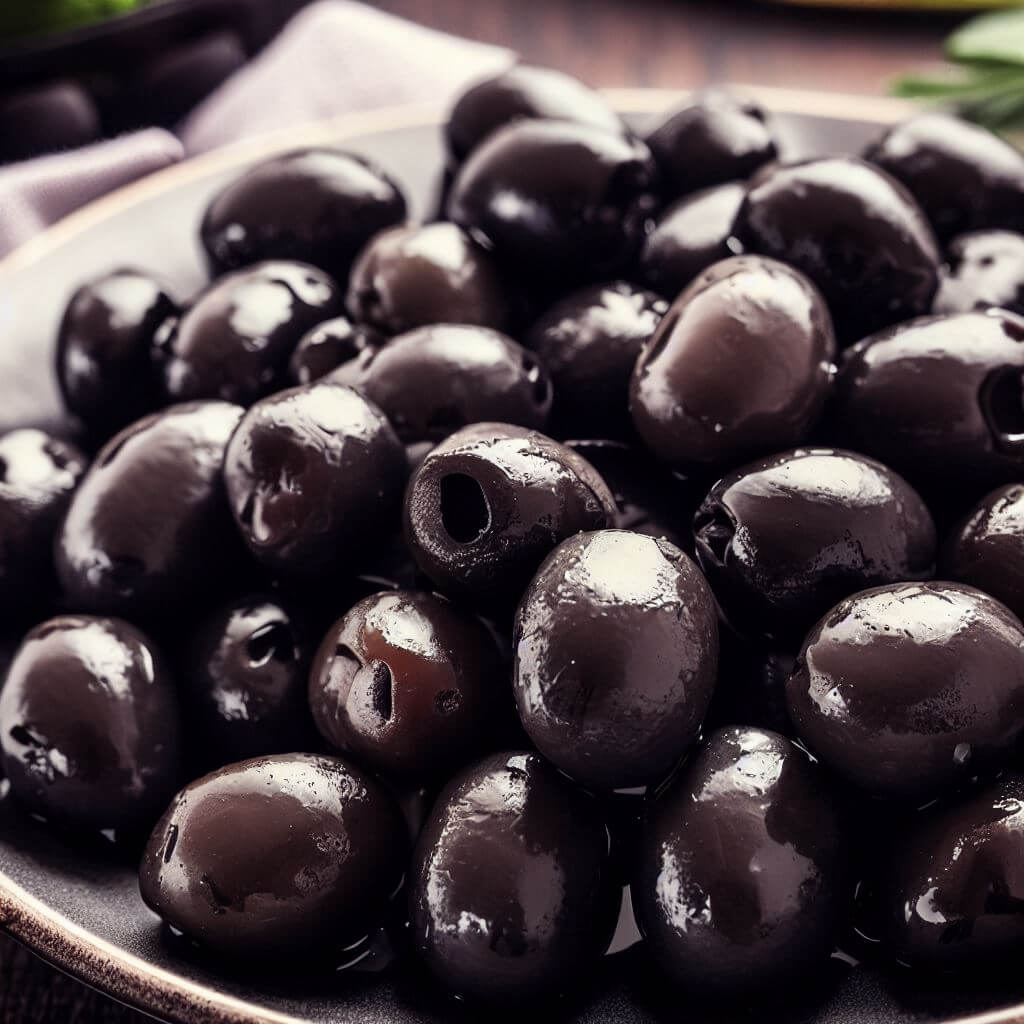
Nutritional Profile
One of the key health benefits of black olives is their richness in mono-unsaturated fats, which improve insulin sensitivity. They also contain a unique compound called ‘oleuropein,’ which has antioxidative and anti-inflammatory properties. Moreover, oleuropein slows down digestive enzymes that break down carbohydrates, thus preventing rapid spikes in blood sugar levels post-meal.
How to Incorporate Black Olives in Your Diet
Black olives can be eaten as is or used to enhance a variety of dishes. They’re a great addition to salads, pastas, and pizzas, and they also work well as a stuffing for meats like chicken or fish. For an easy and healthy snack, try mixing black olives with some feta cheese and cherry tomatoes.
Potential Downsides
It’s important to note that black olives are often preserved in brine, which makes them high in sodium. Consuming too much sodium can lead to high blood pressure, a condition that is often comorbid with diabetes. Therefore, it might be beneficial to opt for low-sodium options or to limit your intake.
6. Black Coffee

Coffee is the morning ritual for many, but not everyone knows that drinking it black can offer unique health benefits, especially for those managing diabetes. Coffee has been the subject of numerous studies over the years, and the verdict is promising: it could be a game-changer in blood sugar control.
Nutritional Profile
Black coffee is rich in an alkaloid compound known as “chlorogenic acid.” This compound has a dual role: it not only lends coffee its bitter taste and dark color but also has been shown to have significant effects on glucose and insulin management. Chlorogenic acid slows down carbohydrate absorption in the digestive tract, acting like a bouncer that restricts rapid increases in blood sugar post-meal.
How to Incorporate Black Coffee in Your Diet
Making the switch to black coffee can be challenging if you’re used to creamers and sweeteners, but the health benefits are worth the effort. Start by reducing the amount of sugar and milk gradually until you acquire the taste for it. Whether you prefer it brewed, dripped, or pressed, black coffee can easily fit into your daily routine. However, moderation is key. Stick to 3-5 cups a day to enjoy the benefits without the risks.
Potential Downsides
While black coffee has much to offer, it’s not without its caveats. Caffeine can be a double-edged sword; too much can lead to jitteriness, increased heart rate, or even sleep disturbances. It can also interact with certain medications, so consult your healthcare provider if you’re considering making significant changes to your coffee consumption.
5. Dark Chocolate
Dark chocolate often feels like an indulgence, yet it offers real health benefits, making it a bit of a paradox in the world of diabetes management. Rich in antioxidants and lower in sugar compared to its milk chocolate counterpart, dark chocolate seems almost too good to be true.

Nutritional Profile
Dark chocolate is rich in flavonoids, a type of antioxidant that not only gives it its dark color but also offers a range of health benefits. Flavonoids have been shown to improve insulin sensitivity, reduce insulin resistance, and regulate blood sugar, making dark chocolate a delightful yet beneficial treat.
How to Incorporate Dark Chocolate in Your Diet
When choosing dark chocolate, opt for those that have at least 70% cocoa content to maximize the flavonoid benefits. Use it in baking, enjoy a small piece as an after-meal treat, or melt it to make hot chocolate. Remember, moderation is essential. A square or two is sufficient to reap the benefits without worrying about calorie overload.
Potential Downsides
While dark chocolate has much to offer, it is also high in calories and can contain added sugars, depending on the brand. Excessive consumption can lead to weight gain, which is counterproductive when managing diabetes. Always check the label for sugar content and other additives.
4. Black Rice
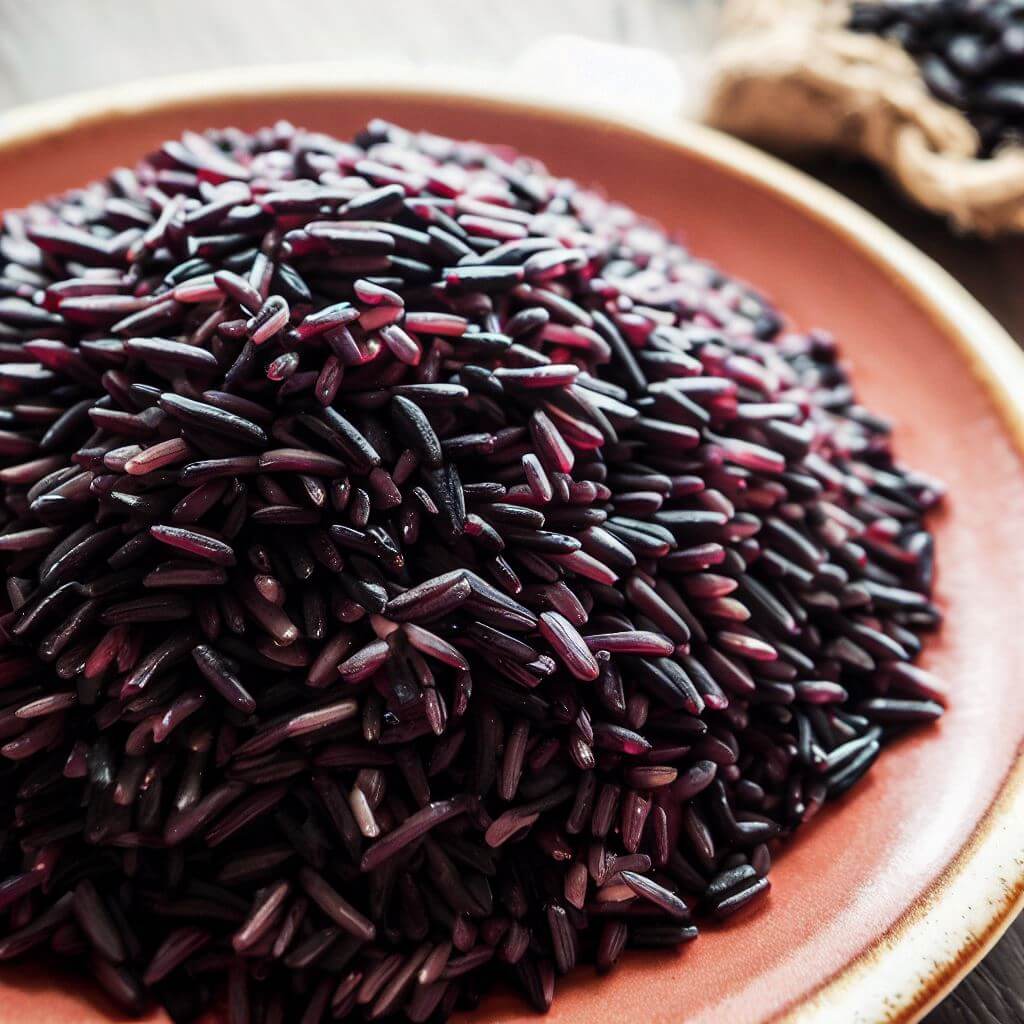
Black Rice, also known as ‘Forbidden Rice,’ is more than just a stunning addition to your plate. This exotic, deep-colored grain is a powerhouse of nutrition and has several health benefits that make it an excellent choice for managing diabetes.
Nutritional Profile
The dark hue of black rice is attributed to anthocyanins, a group of flavonoid pigments known for their potent antioxidant properties. Studies have shown that anthocyanins can effectively lower blood sugar levels by increasing insulin sensitivity. They accomplish this by stimulating the release of adiponectin, a hormone that plays a crucial role in regulating glucose levels.
How to Incorporate Black Rice in Your Diet
Black rice can be used in a variety of dishes. It can replace white or brown rice in most recipes, offering a richer, nuttier flavor along with its health benefits. Whether it’s a stir-fry, a rice bowl, or even a pudding, black rice adds both nutrients and aesthetic appeal to your meals.
Potential Downsides
While black rice is rich in nutrients, it’s also denser in calories compared to white rice. Those watching their caloric intake should keep portions moderate. It’s also worth noting that black rice can be more expensive and may not be as readily available as other types of rice.
3. Blackberries
Blackberries are a sweet and juicy fruit that pack an incredibly nutritious punch. Don’t let their small size fool you; these dark-hued berries are a treasure trove of health benefits, especially for those looking to manage diabetes.
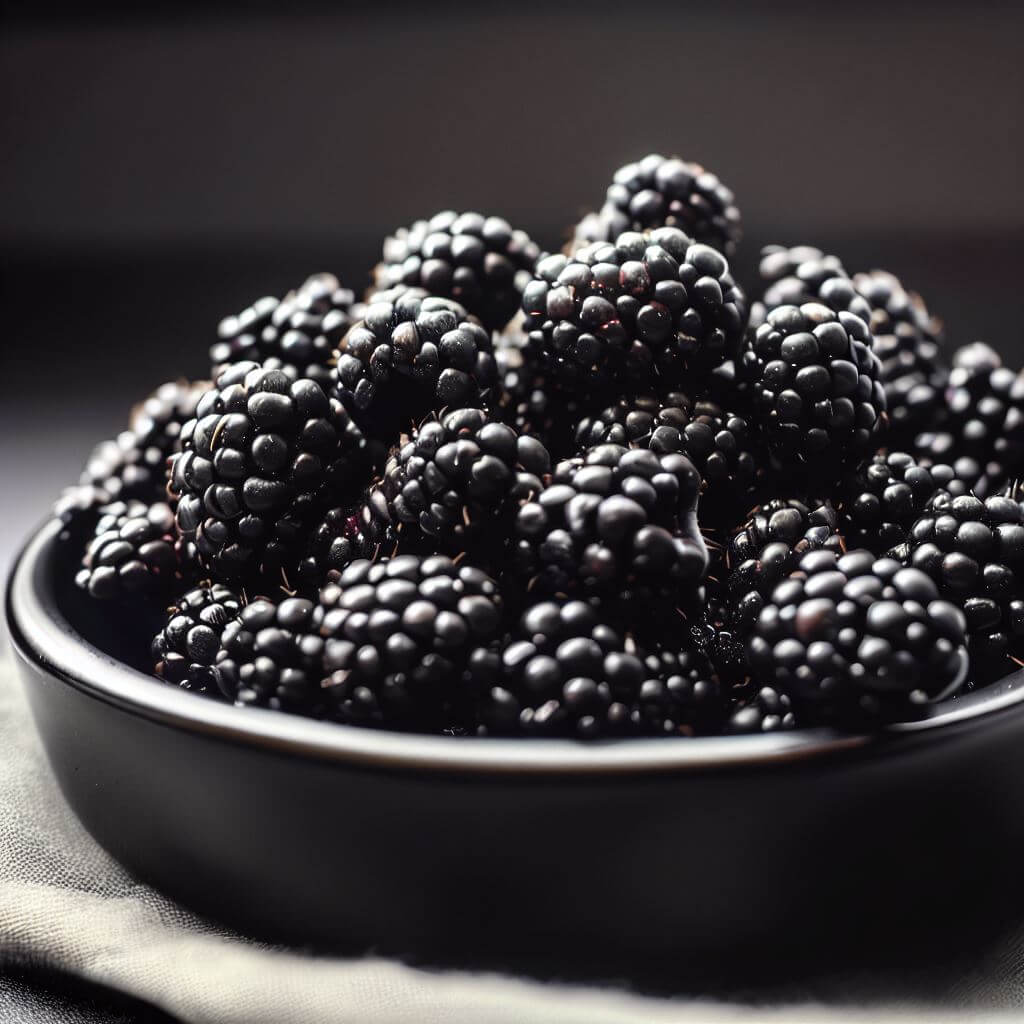
Nutritional Profile
Blackberries are rich in soluble fiber, which slows down the rate at which sugar is released into the bloodstream. They also contain anthocyanins, powerful antioxidants that combat oxidative stress and inflammation—two factors often linked to diabetes. These compounds also inhibit certain enzymes responsible for breaking down carbohydrates into sugars, providing a double defense against blood sugar spikes.
How to Incorporate Blackberries in Your Diet
Blackberries can be enjoyed in a multitude of ways. Add them to your morning smoothie or oatmeal, enjoy them as a standalone snack, or use them to make diabetic-friendly desserts like sugar-free jams or cobblers. They also make a tangy, flavorful addition to salads.
Potential Downsides
While blackberries offer numerous health benefits, they are also relatively high in fructose, a type of sugar. Though the fiber content in the berries helps to offset the rapid absorption of sugar, it’s essential to consume them in moderation, especially if you are watching your sugar intake.
2. Chia Seeds
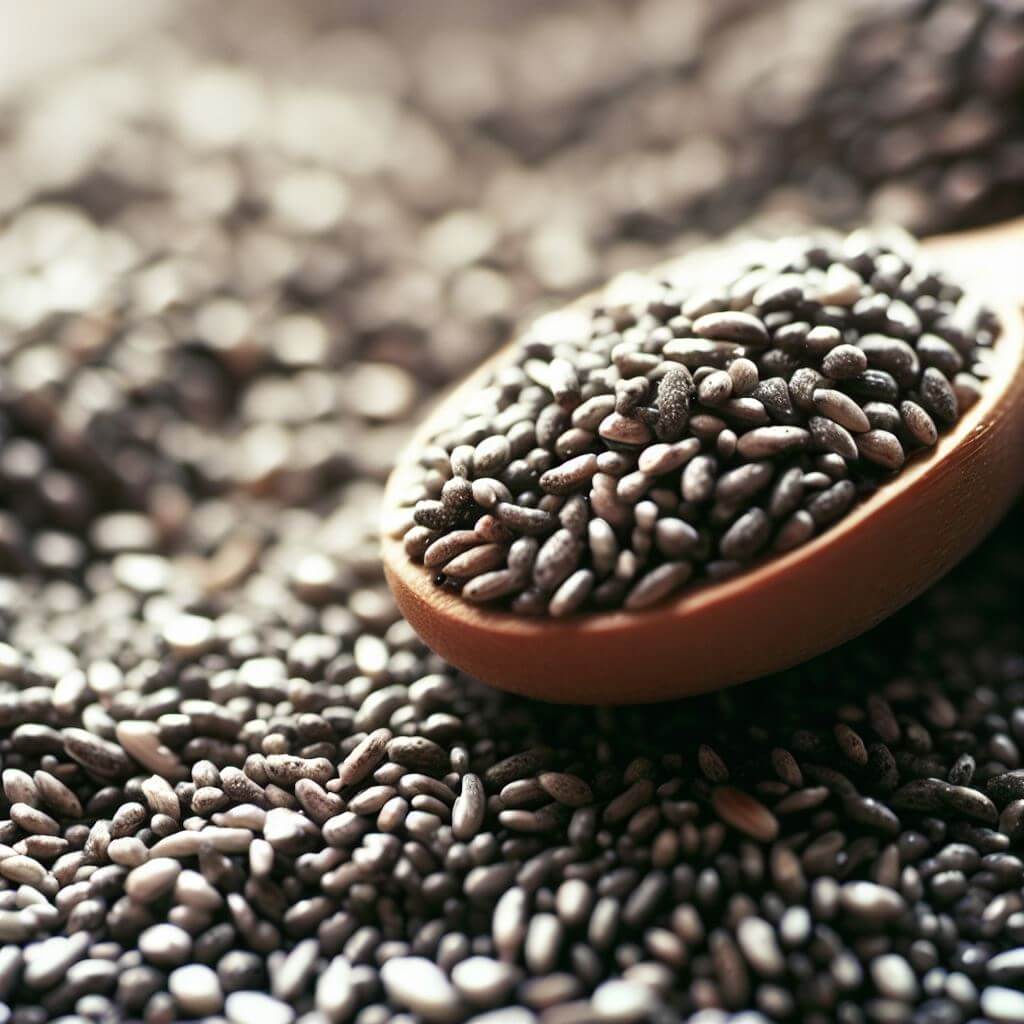
Chia Seeds may be tiny, but they pack a big punch when it comes to nutritional value. These small, black seeds have become extremely popular in the health food community for good reason. They offer an array of benefits that make them a superb choice for diabetes management.
Nutritional Profile
Chia seeds are a phenomenal source of soluble fiber and Omega-3 fatty acids. These nutrients are key players in enhancing insulin sensitivity and stabilizing blood sugar levels. Studies have confirmed that the Omega-3s in chia seeds help to regulate glucose levels by improving insulin response. Additionally, the soluble fiber can slow down the rate at which glucose is absorbed into the bloodstream, helping to avoid sudden spikes in blood sugar.
How to Incorporate Chia Seeds in Your Diet
Chia seeds are incredibly versatile. You can sprinkle them over oatmeal, yogurt, or smoothies for an added crunch and nutrient boost. They can also be used in savory dishes as a binding agent for meatballs or burgers. If you’re up for trying something new, soak the seeds in your choice of milk—dairy or plant-based—to make chia pudding, a delicious and nutritious dessert or snack.
Potential Downsides
It’s important to note that while chia seeds are high in fiber, they are also calorie-dense. So, moderation is key, especially for those who are monitoring their caloric intake. Additionally, if you’re taking blood-thinning medications, consult your healthcare provider before adding chia seeds to your diet, as Omega-3s can act as natural blood thinners.
1. Black Pulses
Topping our list are Black Pulses—lentils, chickpeas, and black beans, among others. These dark-colored legumes are not only affordable and accessible but are also a critical food for anyone looking to manage diabetes.
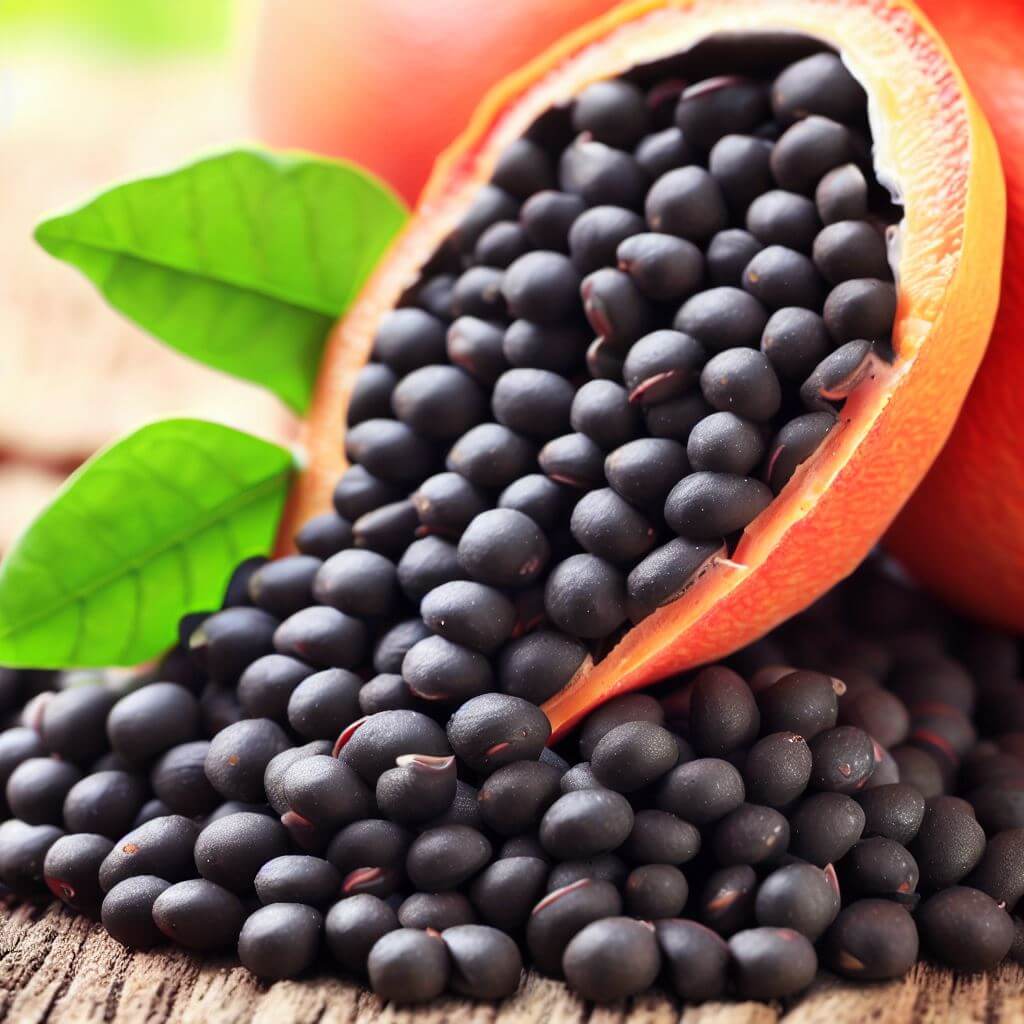
Nutritional Profile
Black pulses are abundant in soluble fiber, resistant starch, and phytonutrients. These components work in tandem to improve glycemic control and lower the risk of diabetes-related complications like coronary heart disease. The soluble fiber and resistant starch slow down the absorption of sugar, aiding in blood sugar stabilization.
How to Incorporate Black Pulses in Your Diet
Black pulses can be used in a variety of cuisines and cooking methods—from stews and soups to salads and stir-fries. They’re also excellent when used as a meat substitute in various dishes, providing protein without the saturated fats found in meat.
Potential Downsides
While pulses are generally safe and beneficial for most people, they can cause gastrointestinal issues like bloating or gas for some, especially when consumed in large quantities. Cooking them thoroughly and soaking them prior can alleviate some of these concerns. Additionally, if you have kidney problems, it’s crucial to consult your healthcare provider before incorporating more pulses into your diet due to their high potassium content.
Wrapping Up: The Power of Black Foods in Blood Sugar Management
Navigating through the benefits of 10 black foods can be a lot to digest in one read. If you’re looking for a concise, visual recap to reinforce what you’ve just learned, our video summary below is perfect for you. It provides a snapshot of each food and its blood sugar-controlling benefits. Ensure you’re on top of your health game by watching it!
So there we have it, a comprehensive rundown of ten incredible black foods that are not just culinary delights but also potent allies in controlling blood sugar levels. From the enigmatic Squid Ink to the humble Black Pulses, each of these foods offers unique nutritional profiles that can be beneficial in diabetes management.
By incorporating these dark-hued wonders into your diet, you’re not only diversifying your meal options but also armoring yourself with essential nutrients that can assist in stabilizing blood sugar levels. Whether it’s the antioxidant-rich nature of dark chocolate or the Omega-3 fatty acids in mussels, these foods are worth considering if you’re aiming for better blood sugar control.
But remember, while adding these foods can provide numerous benefits, they are not a replacement for a balanced diet and proper medical treatment. Always consult your healthcare provider when making significant changes to your diet or diabetes management plan.
Frequently Asked Questions
- Can I consume these black foods in any quantity to control my blood sugar?
Moderation is key. While these foods are beneficial, excessive consumption can lead to other issues such as caloric overload or gastrointestinal problems. Always follow serving recommendations and consult your healthcare provider for personalized advice. - Are there any side effects to be concerned about with these foods?
Generally, these foods are safe for most people, but some, like chia seeds and black pulses, could interact with medications or cause digestive issues. Always check with your healthcare provider if you have specific health concerns or are taking other medications. - How quickly can I expect to see improvements in my blood sugar levels?
Results can vary based on individual health conditions and the overall diet plan. It’s always best to monitor your blood sugar levels regularly and consult with your healthcare provider for a comprehensive diabetes management plan. - Can these black foods replace my diabetes medication?
No, these foods should not be seen as a replacement for medication. They are to be considered as a part of a balanced diet that supports your overall diabetes management strategy, which should be prescribed by a qualified healthcare provider. - Are these black foods also suitable for type 1 diabetics?
While many of these foods can be beneficial for overall health, the management of type 1 diabetes involves unique considerations. Always consult your healthcare provider for personalized advice.





